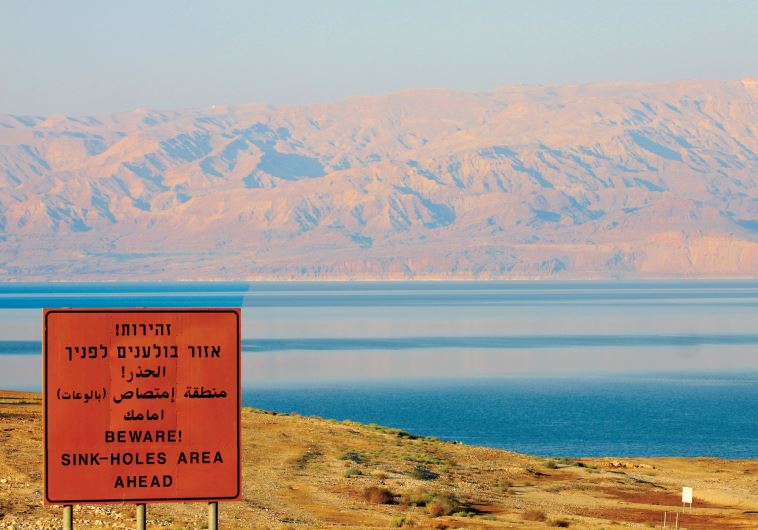The Dead Sea: From world wonder to sinkhole nightmare
The problem of sinkholes along the Dead Sea is getting worse and is negatively affecting tourism.
 A sinkhole forms when a layer of solid salt is dissolved from sweet groundwater, after the sea recedes.(photo credit: ARIEL BESOR)
A sinkhole forms when a layer of solid salt is dissolved from sweet groundwater, after the sea recedes.(photo credit: ARIEL BESOR)